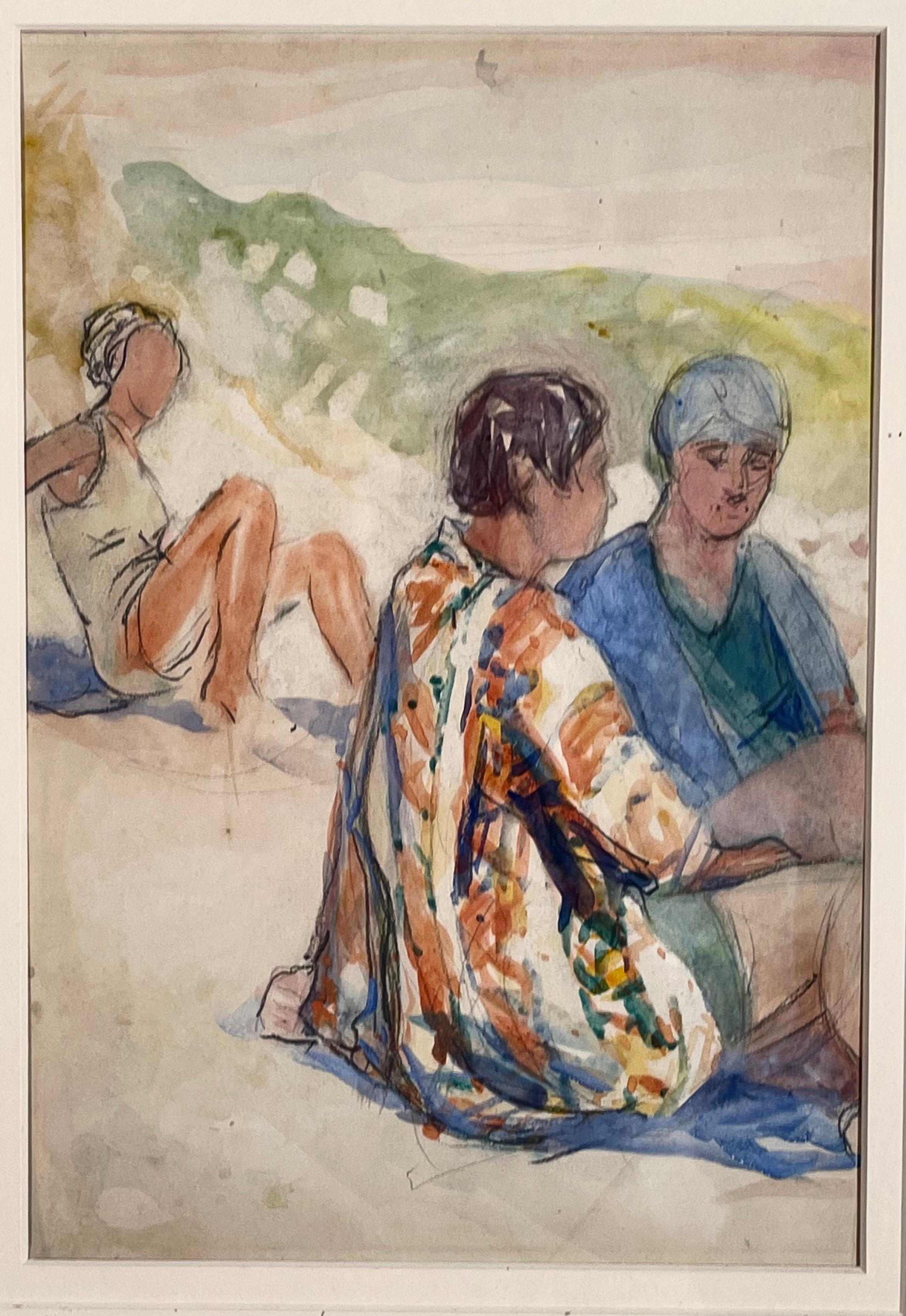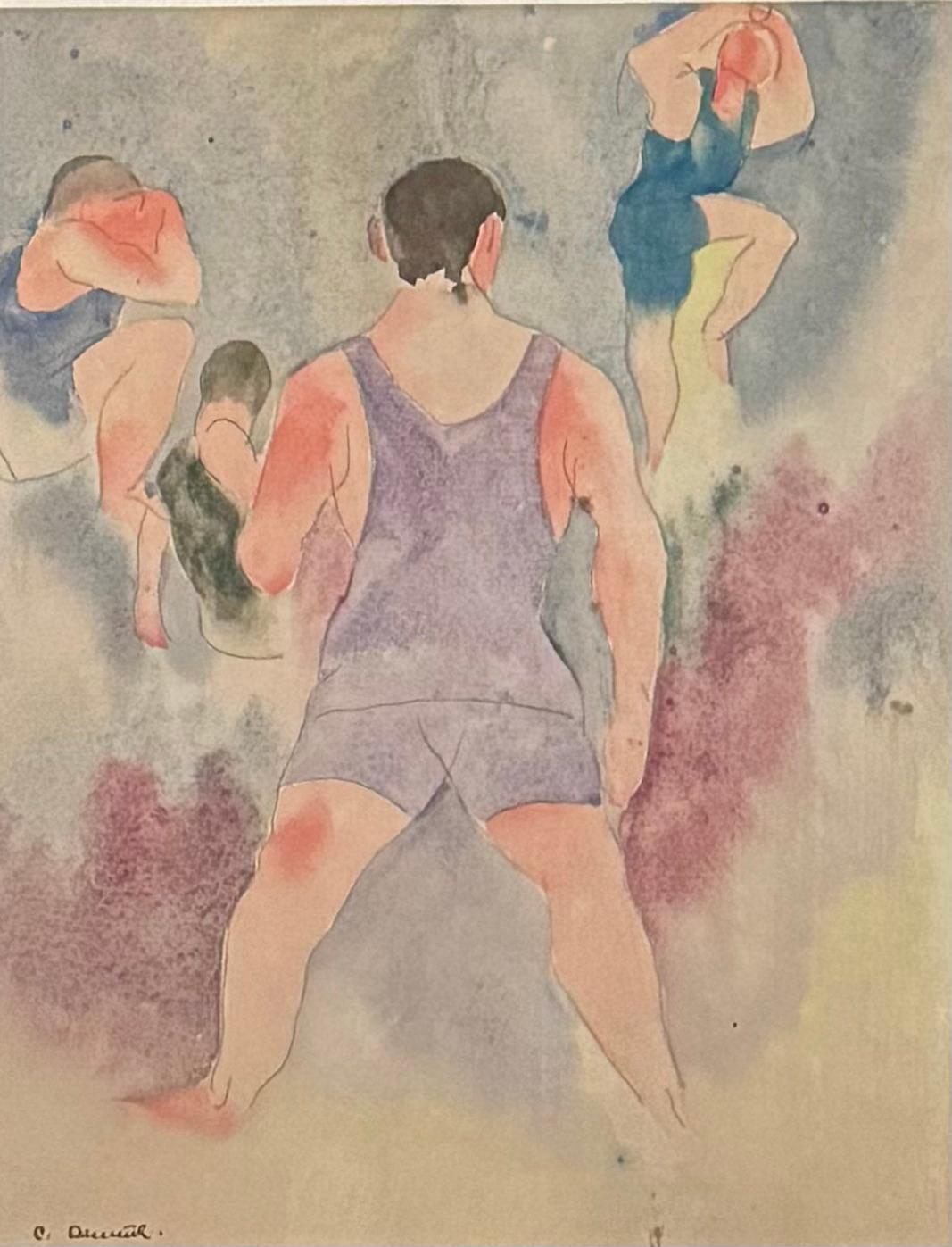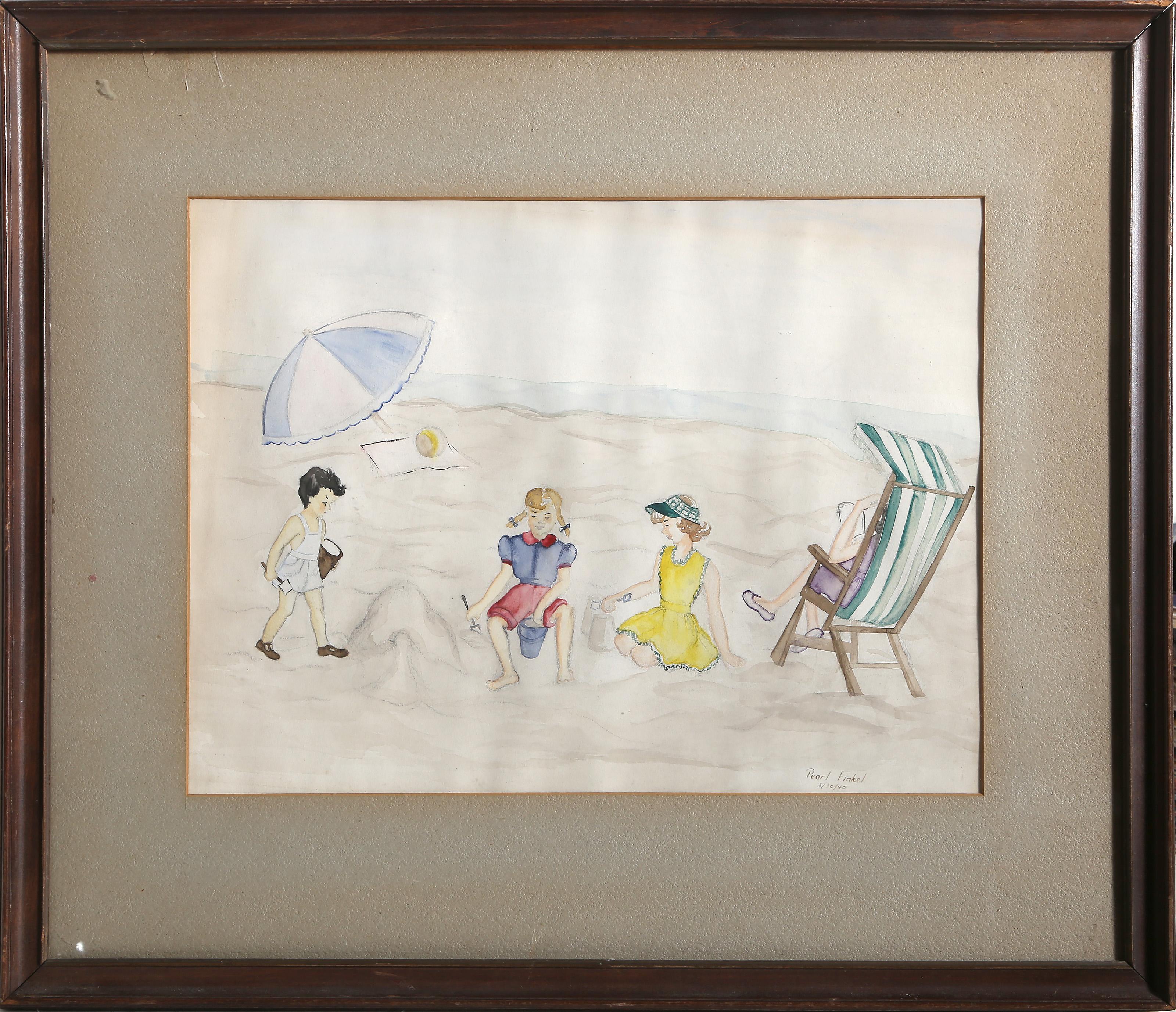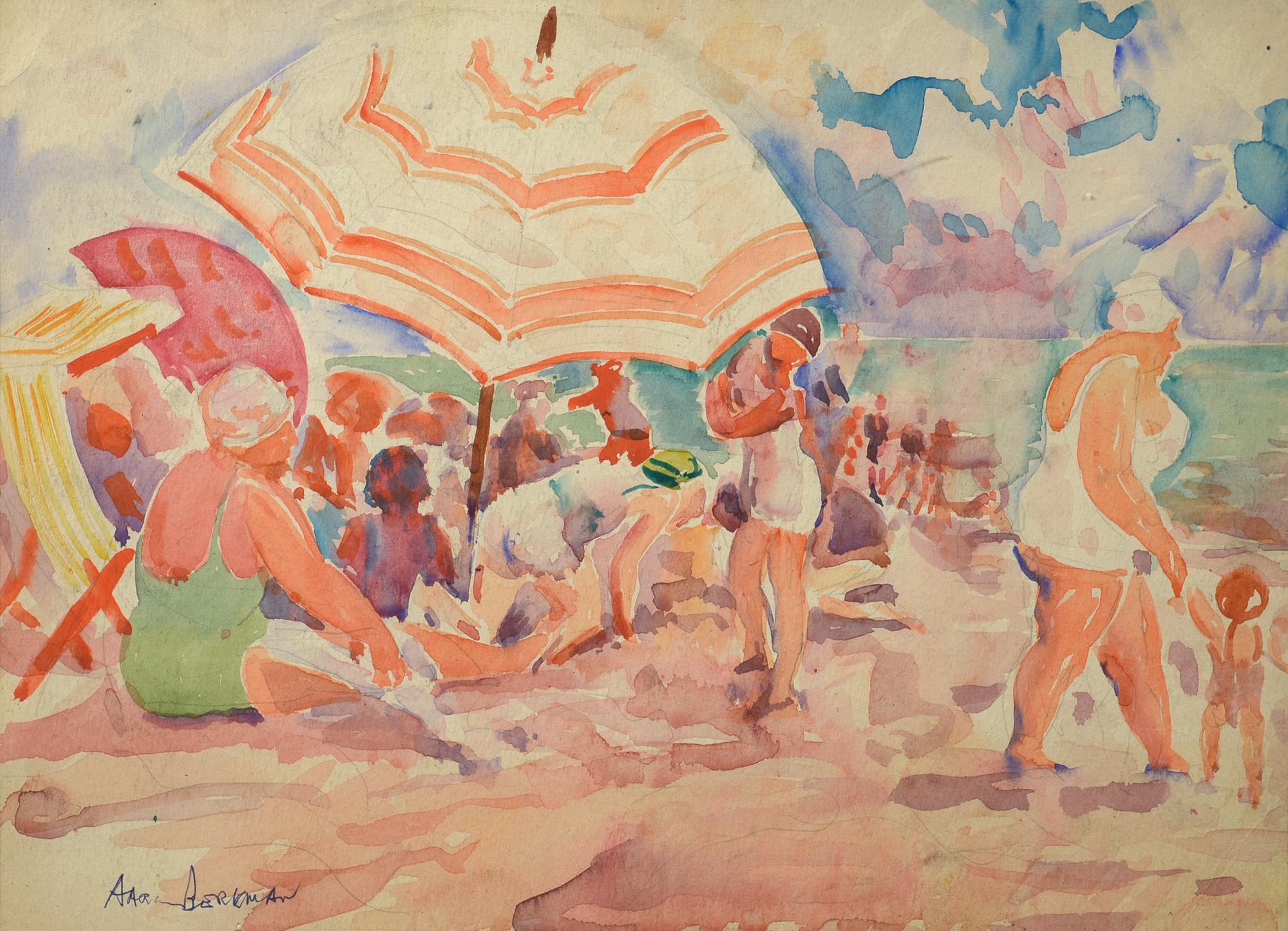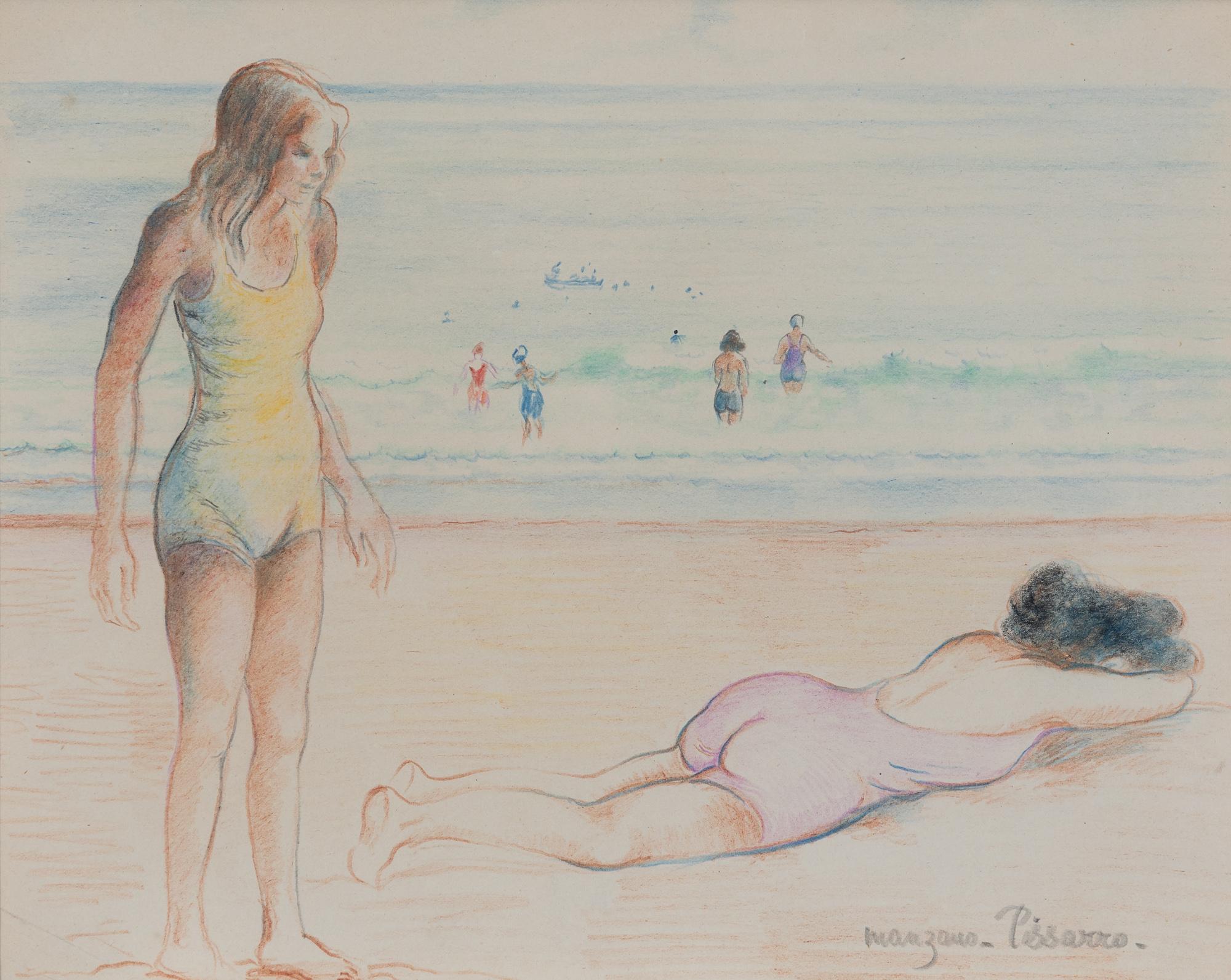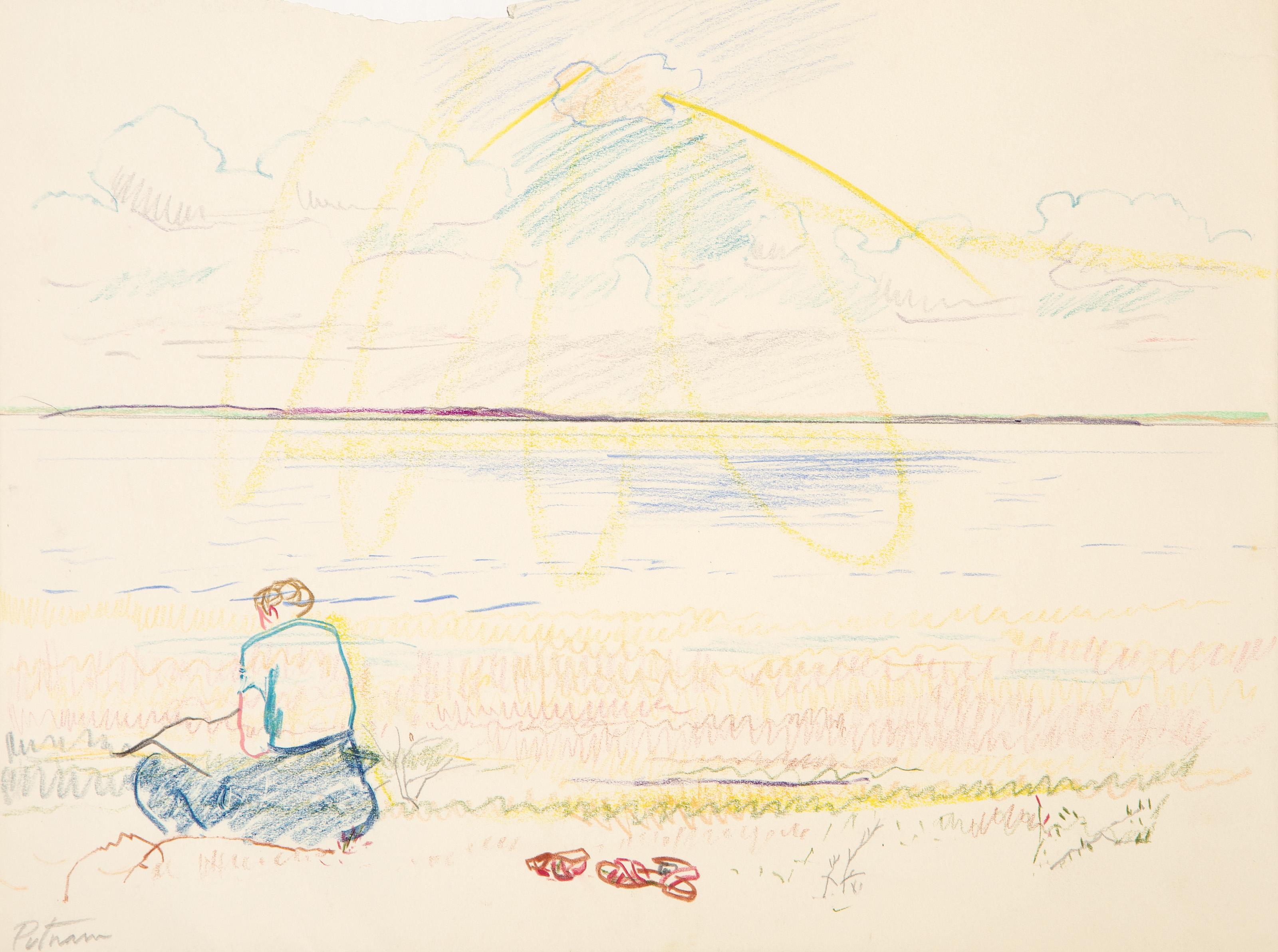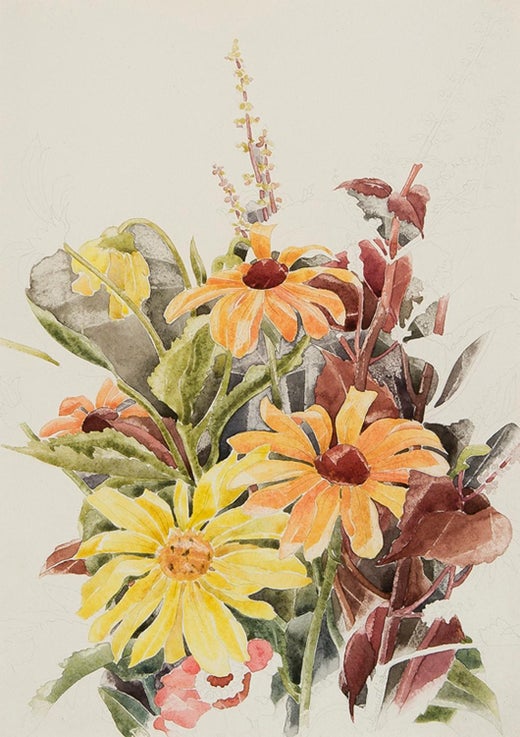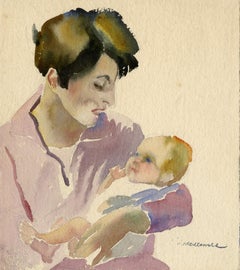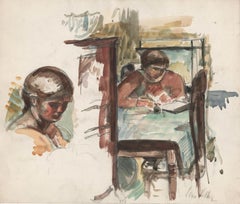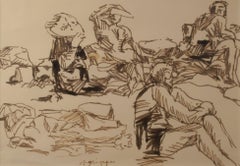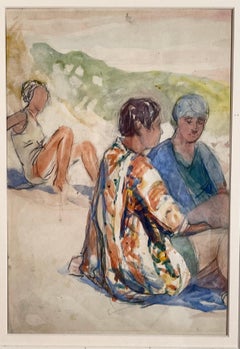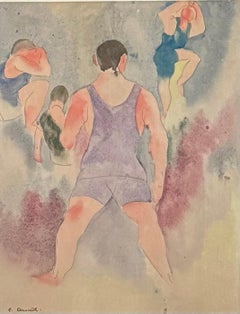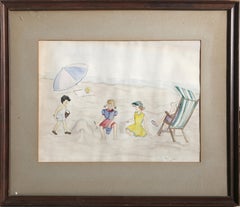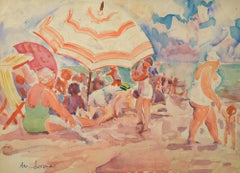Charles DemuthTwo Women and a Child on the Beach at Provincetownc. 1934
c. 1934
About the Item
- Creator:Charles Demuth (1883-1935, American)
- Creation Year:c. 1934
- Dimensions:Height: 8.5 in (21.59 cm)Width: 10.5 in (26.67 cm)
- Medium:
- Movement & Style:
- Period:
- Condition:Original.
- Gallery Location:Fairlawn, OH
- Reference Number:Seller: FA45201stDibs: LU14014082812
Charles Demuth
Acclaimed for his lively Impressionistic watercolors — as well as for his important role in Precisionism, a movement that emphasized geometry and shared commonalities with Cubism and Futurism — American painter Charles Demuth created some of his most recognized works on borrowed time. In the final decade of his life, plagued by ailing health, Demuth painted his renowned Precisionist works like I Saw the Figure 5 in Gold and My Egypt. With each painting, Demuth filled up a life bookended by illness — maladies that both ignited his art career and, ultimately, snuffed it out.
Born in Lancaster, Pennsylvania, Demuth was bedridden at a young age, around four or five, from what would come to be known as Perthes, which affected his mobility and forced him to spend much of his youth at home. Fortunately, his mother provided him with an ample amount of art supplies and nurtured a passion for painting that he sustained over the course of his life.
While Demuth relied on a cane for much of his life, he was well enough to attend Franklin and Marshall College and study art at both Drexel University and the Pennsylvania Academy of the Fine Arts. He completed his first oil self-portrait in 1907 and met the first of what would become a string of influential friends in American artist William Merritt Chase and American painter and arts administrator Thomas Anshutz.
Shifting his focus from oil paintings to watercolors after concluding his studies, Demuth created works that depicted Harlem Renaissance-era jazz clubs and chronicled taboo gay subculture in New York City. The artist was openly gay, and works of this type, even as they were not intended for public exhibition at the time, influenced artists such as Andy Warhol in the decades that followed. His network grew to include artists Alfred Maurer, Patrick Henry Bruce, John Marin and photographer Edward Steichen. American photographer Alfred Stieglitz and modernist painter Georgia O’Keeffe proved to be among the most artistically influential on Demuth. Stieglitz’s famed art gallery in New York, 291, became a spot that the Pennsylvania painter frequented and a location at which he developed an interest in Auguste Rodin’s watercolors and O’Keeffe’s Precisionism.
Demuth also befriended wealthy pharmacist Dr. Albert Barnes in 1905. After the artist received his diabetes diagnosis, a death sentence at the time, Barnes requested Demuth consult with Dr. Frederick Allen, then the leading expert on diabetes in America. Barnes helped with funding Demuth’s insulin treatment — the painter was among the first patients to receive insulin in the United States. Demuth turned largely to painting still lifes of flowers and produce that his mother brought into the house. He died in 1935.
Today, the Barnes Foundation holds the largest collection of Demuth’s artwork. His paintings are also held in the collections of the Philadelphia Museum of Art and the Demuth Museum, which is located in Demuth’s former studio and home and merged with the Lancaster Museum of Art in 2014.
On 1stDibs, find a collection of Charles Demuth drawings and watercolor paintings.
- ShippingRetrieving quote...Shipping from: Fairlawn , OH
- Return Policy
More From This Seller
View All1960s American Modern Figurative Drawings and Watercolors
Watercolor
1930s American Impressionist Figurative Drawings and Watercolors
Watercolor
1920s American Modern Figurative Drawings and Watercolors
Watercolor
1960s American Modern Figurative Drawings and Watercolors
Ink
1890s American Realist Figurative Drawings and Watercolors
Graphite
1930s Art Deco Nude Drawings and Watercolors
Graphite
You May Also Like
Mid-20th Century Figurative Drawings and Watercolors
Watercolor
1930s American Modern Figurative Drawings and Watercolors
Paper, Watercolor
1940s Modern Landscape Drawings and Watercolors
Watercolor
20th Century American Realist Figurative Drawings and Watercolors
Watercolor
1940s Post-Impressionist Drawings and Watercolor Paintings
Paper, Crayon, Pencil
1960s Impressionist Drawings and Watercolor Paintings
Crayon, Graphite
